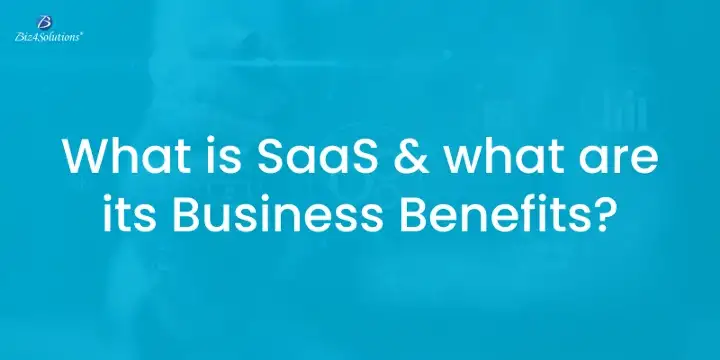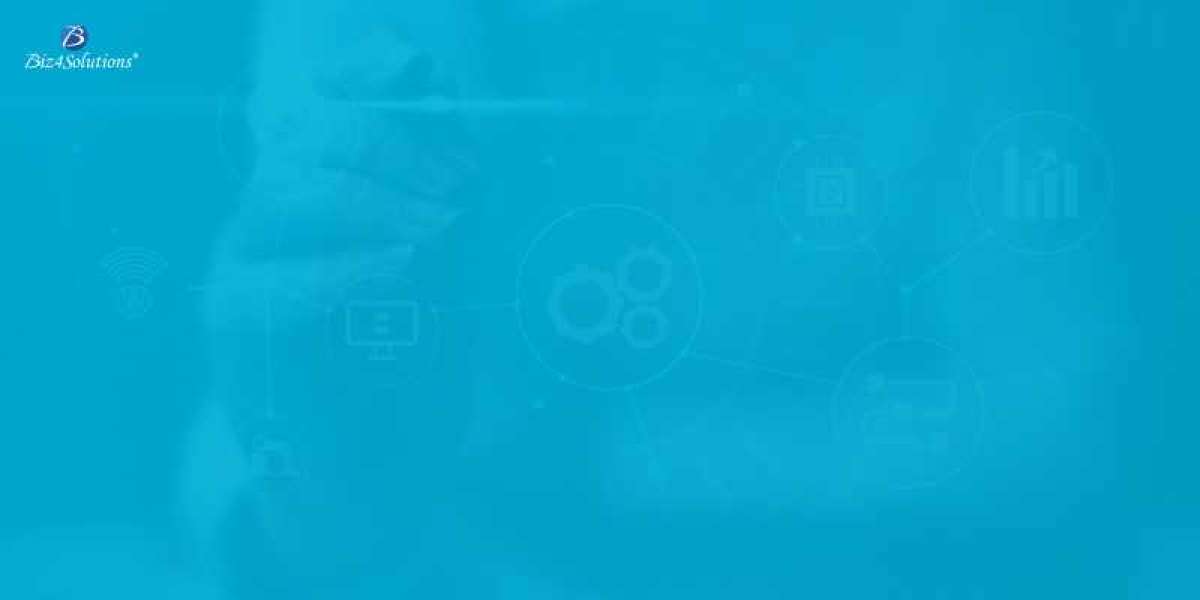
SaaS adoption is gaining momentum as more businesses are embracing a Cloud-based approach to managing their enterprise apps and are looking to reap the benefits of subscription-based services. The tech giant Microsoft was one of the early adopters of subscription-based Cloud modeling by introducing Microsoft Office 365. This approach helped them resolve piracy-related issues, speedily address consumers’ app-related problems, roll out updates faster, and boost revenue generation.
Today, SaaS has become a lucrative option for businesses as it helps them to minimize numerous pain points and serve their consumers better. Here are some interesting stats on SaaS adoption researched by the online portal Zippia.com! “The SaaS market has been valued at $ 186.6 Billion in 2022 and is predicted to reach $ 700 Billion by 2030. At present, the annual growth rate of the SaaS industry is 18%.”
This post explores the SaaS architecture, provides insights into the functioning of SaaS-based applications solutions and discusses the business benefits of SaaS adoption.
What is SaaS?
SaaS (Software as a Service) is one of the three major categories of Cloud computing along with PaaS (Platform as a Service) and (IaaS Infrastructure as a Service).
SaaS is a software distribution model wherein a service provider hosts their client’s software or apps and makes them available to the approved end-users via the internet. The provider charges a subscription fee based on the pay-as-you-go model for their services. This model offers an all-in-one ready-to-use solution for businesses who avail of software services from a third-party Cloud provider for hosting their app instead of purchasing the software and installing it themselves. Simply put, enterprises or app owners rent app usage services and their end-customers can connect to this app using the internet.
Unlike the traditional on-premise software models where the software gets installed on a local machine, the SaaS model allows users to access software from every device that has an internet connection web browser.
Independent software vendors (ISVs) subscribing to the services of a cloud provider save the hassles of installing maintaining complex software and hardware and can speedily host an app at a minimal cost. Business organizations can also use the SaaS provider’s APIs (Application Programming Interfaces) to integrate SaaS apps with their own software or software tools.
Sometimes, the Cloud provider can be the software vendor; this is the case with biggies like Microsoft. Unlike PaaS and IaaS, SaaS products can be used by B2B as well as B2C customers; Business enterprises, software professionals, and even personal users avail of SaaS apps.
Examples of SaaS Products
There are various kinds of SaaS solutions available. Check out the functionalities of the key SaaS products. CRM (Customer Relationship Management) Software is used to carry out tasks like customer data management, sales automation, tracking of customers’ interactions, business information compilation, etc. e-mail Marketing Software automates marketing emails and optimizes message delivery. Accounting Software is used for organizing finances and tracking business growth. Project Management Software is used by enterprises for project planning, resource allocation, schedule management, and timely completion of project-related tasks. The ERP (Enterprise Resource Planning) Software is used to consolidate different organizational processes into one single system; it facilitates the sharing of information and improves efficiency.
Some other SaaS apps include software for collaboration, web hosting, invoice generation, and Human Resources. Microsoft Office 365, Concur, Netflix, Gmail, Salesforce.com, Slack, Dropbox, etc. are popular examples of SaaS products.
Major SaaS Providers
Here are the major SaaS service providers along with their offerings.
Marketing, CMS, Help Desk solutions
1. Hubspot (Service Hub, Sales Hub, CMS Hub, Academy, Marketing Hub)
2. Atlassian (Bitbucket, Confluence, Trello, Jira)
Communication Collaboration Software
1. Google (Docs, Drive, Forms, Analytics, Hangouts)
2. Microsoft (OneDrive, PowerPoint, SharePoint, Teams)
3. Zoom Video Communications (Zoom, KeyBase, Zoom Rooms, Zoom Scheduler, Zoom Video Webinar)
Communications security software
1. Cisco (Webex, Jabber, Webex Meetings, Cisco Umbrella, Duo Security)
Sales solutions
1. ZoomInfo (InboxAI, FormComplete, ZoomInfo, NeverBounce)
Solutions related to consumer experience surveys
1. SurveyMonkey (Wufoo, SurveyMonkey, Market Research Solutions, Enterprise, GetFeedback)
SaaS Architecture

How does the SaaS Model Work?
SaaS apps use the service provider’s networking computing resources to function. SaaS users simply access services from a provider over the internet using any compatible device. These apps run on the provider’s Cloud servers and the app’s data gets stored on their databases. The SaaS provider manages the underlying infrastructure, app’s software, middleware, hardware, availability, access, software updates, etc. ISVs usually sign a service-level agreement with the provider to ensure the security of the app the data present in it. The data can be stored locally or on Cloud or both depending on the SLA.
SaaS Deployment Models
SaaS models can be deployed on either of these - Public Cloud, Private Cloud, and Hybrid Cloud. These are the standard SaaS deployment models as defined by the NIST (National Institute of Standards and Technology).
Public Cloud
The infrastructure of a Public Cloud is meant to be used by multiple tenants. It is owned, operated, and managed by large-scale providers like an academic/government organization or a business entity, or a combination of both. It is usually located on the premises of the Cloud provider. Microsoft, Amazon, and Google are examples of public Cloud providers.
Private Cloud
A Private Cloud is meant to be used exclusively by a single enterprise that may involve multiple consumers. Here, the ownership and management lie with the organization itself or a third-party service, or both. The organization either develops its private Cloud or hires services from a Cloud provider. So, the infrastructure can be located off-premise or on-premise.
Hybrid Cloud
A Hybrid Cloud can be referred to as an environment that integrates the private and public Cloud infrastructures. Take a look at this example. In a Hybrid Cloud environment, a Private Cloud is used for sensitive data that requires military-grade security while a Public Cloud is used for other elements of the environment. Hybrid Cloud comes with a customizable infrastructure that can be modified as per demand.
What are the Business Benefits of SaaS
Here are the key business benefits of SaaS adoption!

Managed Services with endless Offerings
The SaaS provider takes care of the backend infrastructure, complex deployment procedures, software maintenance tasks on your behalf. Most of the SaaS apps comply with industry-specific regulations and mandates. So, you need not take extra efforts for staying compliant. Such managed services minimize your burden considerably and enable you to concentrate on your core business functions.
Several SaaS vendors provide the much-needed documentation training regarding the onboarding process resulting in increased ROI for clients.
Lower Costs High Speed
Clients availing of SaaS services enjoy the benefits of minimal configuration and zero installation. Therefore, SaaS users save on upfront costs like installation; purchasing software licenses hardware resources; and infrastructure setups. Ongoing costs such as software maintenance and upgrades are also taken care of by the provider. Effortless app integration, simple learning curve, easy adoption, and no maintenance responsibilities reduce the time efforts of the client’s IT workforce. The outcome is faster deployment at lower costs.
Moreover, owing to the pay-as-you-go model, businesses have to only pay for the software they’re actually using. There’s no wastage of resources or unused licensing. Furthermore, the subscription-based pricing model rules out chances of any financial risks for small-scale businesses or start-ups. Also, small-sized businesses obtain high-quality software without having to incur heavy expenditure; which is unthinkable with conventional business models.
Elevated Customer Experiences
SaaS allows you to provide seamless services and elevated customer experiences to your end customers. Here are the reasons! You can reap the benefits of the most recent cloud-native technologies to obtain unimaginable outcomes. Moreover, the versions released by SaaS providers are extensively tested. As such, you need not worry about issues like bugs or random errors that lead to downtime.
Automatic Updates
SaaS vendors incrementally update their software and implement security patches at regular intervals. So, users can avail of the facility of automatic updates without needing any additional support from their IT team. Also, the updates are frictionless with minimal bugs while maintaining high-level security.
Integration
SaaS solutions can be effortlessly integrated with other systems platforms with the help of APIs. Users can even customize the software solution as per their requirements without incurring extra infrastructural expenses.
Security Data backup
SaaS service providers heavily invest in cybersecurity, automatic data backup, disaster recovery mechanisms. Data is stored on remote servers and hence, even if there’s a hardware failure in your local data center, you are least likely to lose your data.
Scalability
SaaS solutions exist in Cloud environments that offer scalability which is a key component in today’s data-driven world. Users get a flexible platform that allows on-demand upscaling downscaling of computing resources based on the need of the hour. Therefore, if you expand your business operations, you need not have to purchase more server capacity or additional licenses to meet the demand of serving more consumers. You just have to modify your current subscription plan to accommodate the requirement, without having to upgrade your current infrastructure.
Free Trials
Several SaaS providers offer their would-be clients the facility of free trials of their products. This allows businesses to validate the efficiency of the SaaS product before investing in it. Clients also get a chance to match the SaaS product’s offerings with their business requirements and the already existing enterprise programs. They can check how well the product functions in their business environment.
End Note:
SaaS adoption brings a lot to the table! Businesses rent software services and enjoy a hassle-free life without having to deal with additional issues related to IT, hardware software maintenance, and many more. Besides, SaaS vendors offer perks like flexibility, effortless customizations, and scalability to fulfill their client’s specific business objectives. With your SaaS provider handling crucial tasks like software hardware management, app access, performance, data storage, and security; you can shift your focus to devising business expansion strategies.
SaaS comes with multiple advantages, but a business owner must know when to adopt SaaS and how to reap its potential to the fullest. So, if you are a beginner, it is advisable to seek technical assistance from experienced Software development services in the USA.








